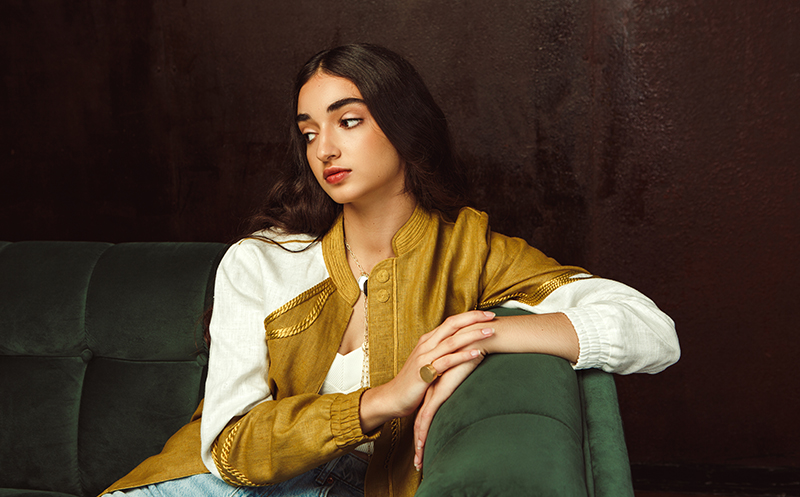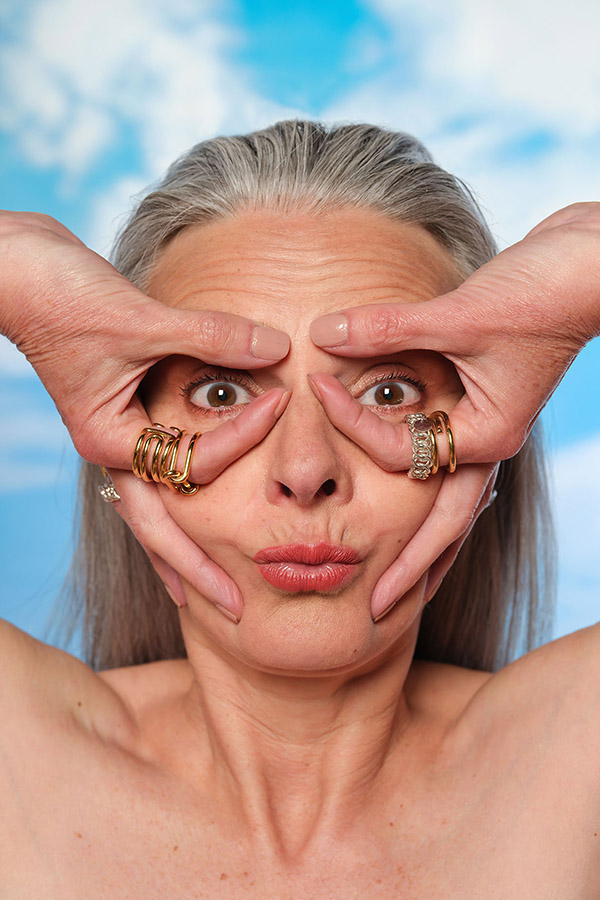
Interview Leïla Bousseta
Leïla Bousseta is an artist sensitive to timeless beauties. She expresses this sensitivity in the intersection of two of her passions: fashion and a tribute to the immense heritage of her country of origin, Morocco. The designer brilliantly masters the art of combining aesthetics and ancestral know-how, in unique pieces rich in detail. It is therefore with passionate spontaneity that Leïla Bousseta confides in the history of her eponymous brand with the Label AÉ.
Can you introduce yourself in a few words?
My name is Leïla Bousseta and I am the founder and creative director of the Leïla Bousseta brand. This label was born out of my passion for fashion and crafts. And yet … I had an academic background in physics so it might sound a little weird (laughs)!
But I am a very attached person to my origins and I have always been fascinated by the fashion industry. The creation of my brand is therefore a fusion between my personal vision of fashion which is universal and the Maghreb sartorial heritage since I am Moroccan of origin.
How has your cultural heritage inspired you?
You know, it is my case and it is the case of all North Africans: we are very attached to our culture. It is a culture which is very rich by its history and its geographical location. It is a culture which has spanned several centuries and which has experienced a very important sartorial and cultural richness. We can therefore draw from this wealth to create. Personally, that was the case for me.
Can you tell us about your brand’s DNA?
I will talk about etiquette instead. This label is difficult to define and I often find it difficult to answer this question. First, because my brand has the particularity of not following trends. This is a strength but also a difficulty because, you know, when you are not following a train which is already there, it is up to you to lay the bricks, and to build your own. At the beginning it was a difficulty for me. Especially since my creative universe has always been an ambassador of a culture. Whenever I make a garment, I try to keep this culture in mind, so that I don’t deviate from the trends that are around me. I try through each piece of the collection to convey identity messages. I think you can find this in the bombers first and then in the last collection.
For Moroccans, craftsmanship is very visible and present in our everyday life, it is not at all like in Paris. We are very attached to this culture and this message I try to convey through the pieces, in the cuts and the choice of materials: if you take back my products it is only linen, neutral materials and embroidery.
To sum up, I would say that Leila Bousseta’s DNA is built around an art of living. My universe of creation is centered around a Moroccan art of living expressed and taken up in a contemporary and universal way. Universal, because I want to market the brand’s products internationally. This is what I started to do with the Foreign Affairs Label: I needed this universality in the identity of the products as well.
If you were a Moroccan garment which would you be?
Of course I would say the caftan because it is the centerpiece of all wardrobes in Morocco! But, if I take the time to think, I would say the little jacket instead. Lately the creators in Morocco dare the small jacket. They encrusted it with all Moroccan dress codes.
Conversely, the caftan is a piece that only Moroccans and North Africans would dare to wear. It is a difficult part to export. I find that the strength of cultural wealth lies precisely in being able to take it out of its territory and be an ambassador of a culture. There is no point in keeping it compartmentalized in a country or a culture.
Why did you choose the bomber jacket as a key piece in your collections?
So already this is an article that I have always liked. And then I find that it is a fairly universal garment. It is found in the wardrobe of all cultures and it fits perfectly with my vision of things. I wanted to convey the richness of my culture and my vision of fashion in a universal garment that anyone can wear anywhere and anytime.
In addition, being a single product allowed me, at the beginning, to take the time to find my identity. I think the most complicated thing for any designer is having their own identity, one that customers and the community could later recognize without having to flip the label. That’s why I really focused on this step.
It was only after this step that I decided to put my identity into a larger wardrobe. This is what I started to do with the last collection which includes harem pants, dresses, shirts … But the bomber jacket was an essential starting point for this development.
What is a typical day in your workshop, from drawing to formatting?
The days depend a little on the time of year because we are not in a continuous cycle. It will depend on the seasons, an upcoming event or a collaboration. We are therefore flexible depending on the season and what is happening.
But generally our creative process goes through a number of stages. First the choice of the material that I make myself. Then I choose my moodboard by really taking the time to put together everything that has inspired me lately. I then draw my sketches and build the garment. This garment construction step really comes last in every collection because I take great care to keep the shape of my collection simple, my products are very simple in terms of fit because I want to be able to embed the crop and the codes on it: this is what makes the strength of my pieces and of my brand in general.
How has covid affected your work as a designer?
It is true that the covid period which continues until today has been a very difficult period because the delivery times and payments in this sector come late. Let me explain: we live and we feed our work thanks to the income that we generated the previous season because we work by season and not by month. With the development of covid, things turned upside down and it scattered all the cards. What personally saved me was having very little load thanks to a small team in which everyone is multitasking. So I could overcome this period, otherwise I would have stopped. Unfortunately, that was the case for a lot of creators and I find it a shame because they were doing a good job and they found themselves having to give up everything.
How can we help creators to overcome this context?
I think that it is first and foremost the role of the State because there are departments that take care of this and they really have the duty and the obligation in the context of a health crisis to support these start-ups and these young projects. It is then the responsibility of the entire social community to think about these creators and consume their products. It is true that designer products sometimes remain beyond the means of the majority, but we must educate people to consume these products, if only to encourage creators to do their job.
What do you think is timeless fashion?
Timeless fashion is first and foremost fashion that does not follow trends. It is a fashion in which we find the identity of the creator. It is a fashion that carries meaning. This last point is the most important for me because when fashion has meaning, it can travel anywhere, anytime, it can cross eras and periods. But when it just follows the trends of a certain period, it ends up tarnishing itself.
Why did you choose the Label AÉ to represent your brand?
The choice of the Label AÉ was very relevant for me in the sense that it is a platform that allies and converges with my basic principles. She defends brands that have fashionable but sustainable content. There is usually a confusion with all that one hears and all that is publicized about sustainability: one generally associates it only with environmental sustainability. But in fact, the meaning of the term is very broad. It also includes cultural sustainability and this is what my products mainly defend because when a garment is anchored in a culture it is cultural development! The Label Affaires Étrangères defends these principles loud and clear. He does not use this discourse only in a marketing strategy and he is very serious in the choice of creators. At the beginning I thought (and I was right besides), that it could only bring me good things. Today, after a year of collaboration, I am still very happy.
Thank you for this fascinating interview! Do you want to add anything?
Well yes, I would like to talk about social networks! Indeed, you should know that social networks are a double-edged sword for small creators. On the one hand, it allows very quick access to the customer and to the community. Social networks have changed the shape of markets by allowing a new environment to take hold (what is called the web). Brands and consumers interact more easily without being hampered by spatial barriers: you are in Paris and I am in Morocco and we can communicate! That has been the role of social networks and the internet in general.
But … it made small brands very vulnerable to copying and plagiarism and that’s a very bad side of social media. The small brands are still in their infancy, they do not yet have this identity which is very present. So when you copy your products, you bury your image. We no longer know who is the copier and who is the creator. We therefore want to share our content, to create a link with customers and we also have this fear of being copied by others. There is no system that governs social media and that’s a real problem. Things are starting to change but this change does not keep pace with the evolution of social networks.
